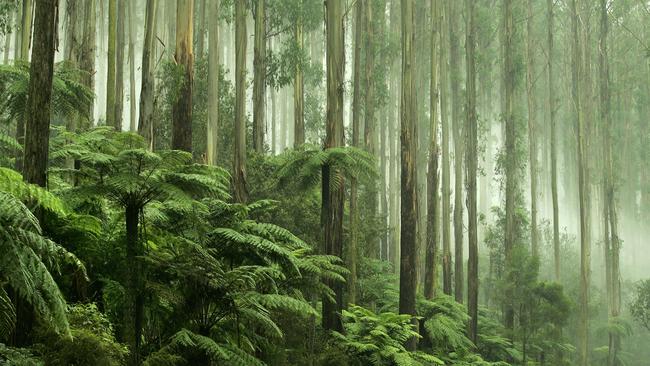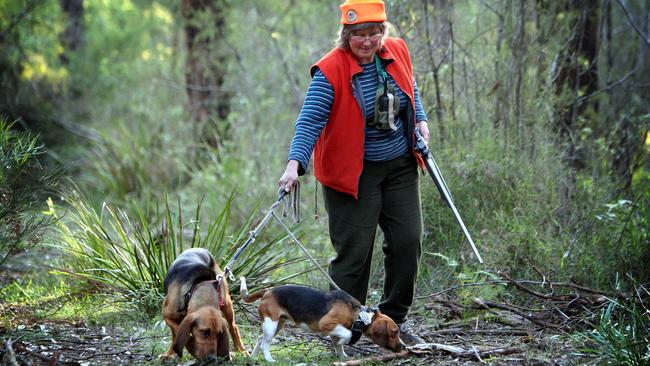Locked out: 300,000ha of state forest could be turned into National Park
Hunters, firewood collectors, prospectors and horse and trail-bike riders face losing access to 300,000 hectares of state forest.

The end of native forest logging this week clears the way for the Victorian government to create a controversial new Great Forest National Park on Melbourne’s doorstep.
The move would lock up about 300,000ha of the Central Highlands state forest and block hunters, household firewood collectors, prospectors, apiarists, 4WD, horse and trail-bike riders from using the largest area of forest close to Melbourne.
In response to the government’s call for an interim report on the Central Highlands, the Victorian Environmental Assessment Council last month recommended converting about 75 per cent of the region’s 389,725ha of state forest into national parks.
VEAC’s report recommends 300,000ha of state forest be brought within “a large protected area such as a national park”, which “would link the existing Yarra Ranges, Kinglake, Lake Eildon and Baw Baw national parks and the Bunyip, Cathedral Range and Moondarra state parks”.
Locking up more state forest in a new Great Forest National Park is also likely to restrict campers to fewer and more regulated sites, which prohibit open campfires and dogs.
Sporting Shooters Association Australia (Victoria) spokesman Barry Howlett said “with the end of forestry in these areas, you have to wonder what this public land is being protected from: Is it the public?”
“For hundreds of thousands of working Victorians, camping with the family, including the family dog, is the only affordable holiday option. If you turn these areas into National Parks and lock their dogs out, where are they going to go?”
VEAC’s report goes as far as listing the “growing population in metropolitan Melbourne leading to more recreational/human use pressures” as a “threat” to the Central Highlands’ forests.
“Growth in the population of nearby metropolitan Melbourne places increasing pressure on the forests for recreation and other uses,” the report states.
“Increased use potentially threatens social and cultural values through competition or conflict between uses or may threaten environmental values through factors such as increased access or facilities and infrastructure development, spreading of weeds, disease and pests, and increased ignition of fires.”
The Victorian National Parks Association, which along with other environment groups has campaigned for the creation of the Great Forest National Park, says the benefits to native wildlife, water catchments and ecosystem health are immense.
“We know national parks are very popular with the public,” VNPA forest campaigner Jordan Crook said. “You will see more people going out to these areas, now they’re released from logging.”
A spokeswoman for Environment Minister Steve Dimopoulos said the government “welcomed” VEAC’s interim report, which would be a key consideration for the Eminent Panel that will undertake community engagement on the future of the Central Highlands next year.
The Eminent Panel’s five members, who will make the final recommendation to government of the park, includes VEAC chair Mellissa Wood.
Prospectors and Miners Association of Victoria president Jason Cornish said the government was just engaged in “tick-the-box consultation”, given past experience showed it had adopted VEAC recommendations despite community opposition.
“The creation of the Great Forest National Park will be a disaster, economically, socially and environmentally – with more fires and feral animals – amid a lack of rangers,” Mr Cornish said.

VEAC and the VNPA have already warned the Allan government would need to put more funding into management of an expanded park system, which would almost triple in size from the current 165,747ha to about 460,000ha.
VEAC’s report states “sufficient management resources are required for active and adaptive management to restore and maintain values and build resilient healthy forests”.
Meanwhile those who currently use the forests face enormous uncertainty.
VEAC found individuals and businesses hold 135 licences and leases across the state forest, including a 3630ha alpine grazing licence in the Upper Goulburn Forest.
Beekeepers hold licences over another 186 apiary sites, mostly located in the forests on the north side of the Great Dividing Range in the Goulburn River basin.
As for hunters, VEAC’s report states: “it is difficult to estimate the number of hunting trips taken in the RFA area, but a total of 58,332 people were licensed to hunt game (deer and some ducks) in Victoria in 2022”.
Mr Howlett said the areas proposed to be included in the Great Forest National Park included “large areas where hunting deer with hounds and gundogs is probably the most dominant use in the cooler months”.




